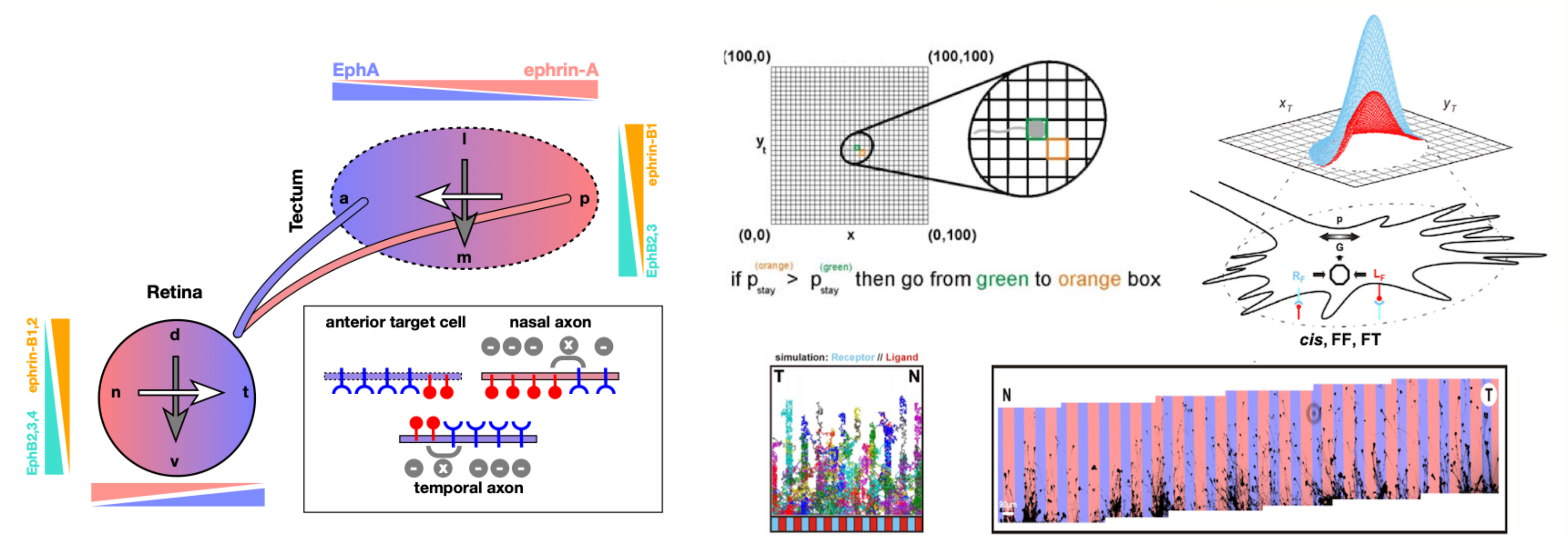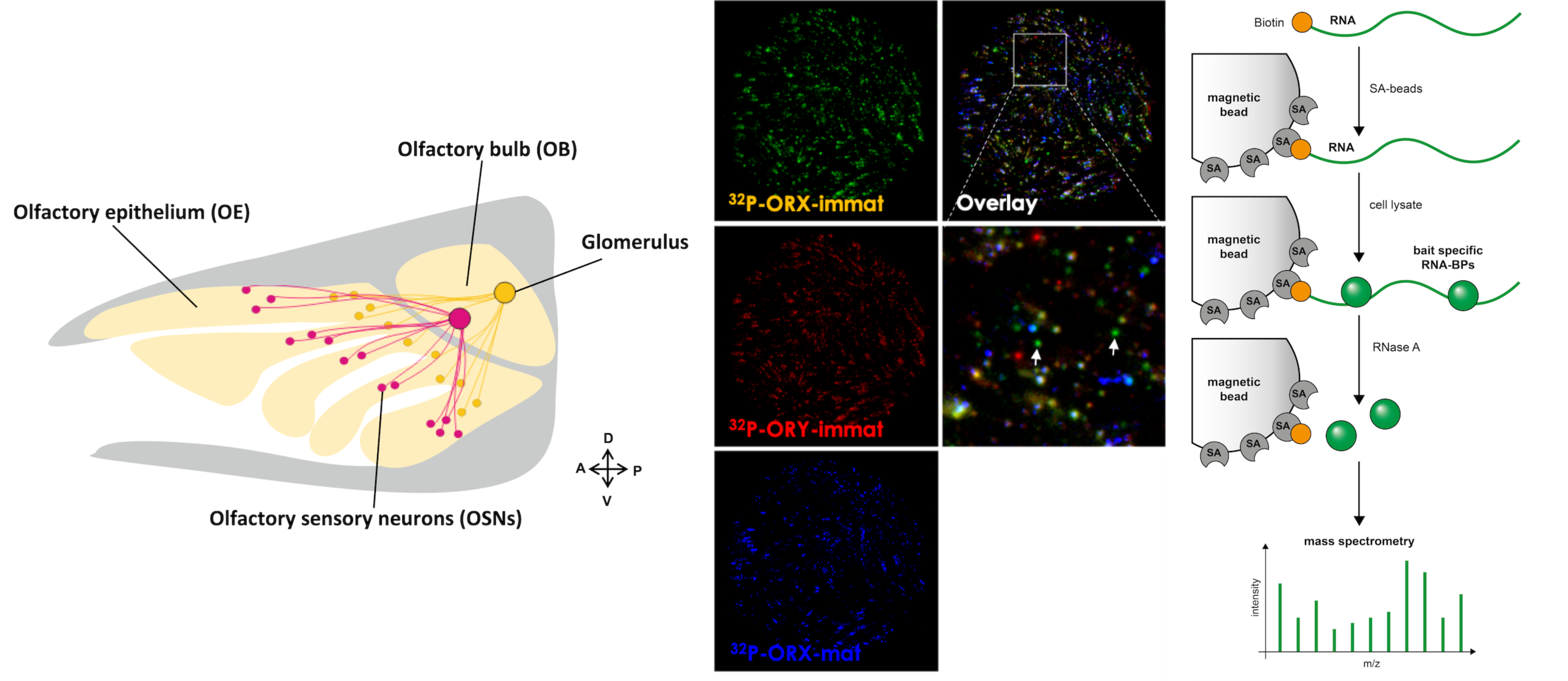Axon Guidance
Two very basic patterns of neuronal connectivity can be discerned - topographic and non-topographic connections. Topographic projections, which are neighborhood preserving layer-to-layer connections, are used for the faithful transmission of preprocessed information from one brain center to the next. Non-topographic projections, where connectivity is based on the type in stead of the location of the neuron, are used to re-distribute information. As a model for the development of topographic connections we investigate the retinotectal projection transferring image information from the eye to the midbrain’s optic tectum. Our model for non-topographic connections is the primary olfactory projection conveying odor-information from the nose to the forebrain’s olfactory bulb.
Project 1: Computational Simulation and in vitro reconstitution of retinotopic mapping
Scientists involved: Sebastiana Ruisi, Prof. Dr. Martin Bastmeyer, Dr. Franco Weth
Alumni: Christoph Gebhardt, Markus Weschenfelder, Felix Fiederling
In this project, we analyze the development of the retinotectal projection through computational simulation in MATLAB and parallel experimental validation in vitro. We have devised a comprehensive theoretical model that implements all potentially relevant guidance cue interactions involved in this developmental process and suggests that navigation amounts to the search of the growth cone for a balance of counter-acting ephrin/Eph forward and reverse signals. The model is powerful in explaining the results of countless experiments conducted on the system over many years of research. We use the model to predict the outcomes of in-vitro assays of axonal guidance by which we try to reconstitute brain wiring in a petri dish. To this end, novel assay substrates of guidance molecules are manufactured using surface-activation chemistries and protein functionalization by contact printing and microfluidic techniques.

During topographic mapping, growth cones perform navigation within fields of external ephrin/Eph counter-gradients by searching for target addresses encoded by precise concentration ratios. Intriguingly, the same growth cones are able to desensitize to these repulsive guidance factors, an observation that seems hard to reconcile with topographic accuracy. We used collapse assays and devised special gap assays to address the puzzle of growth cone adaptation. In this way, we discovered a novel co-adaptation mechanism which appears evolutionary tailored to retain topographic identity in spite of adaptive sensitivity changes. We implemented this co-adaptation mechanism into our computational model, which then reproduces the results of all in vitro adaptation assays while retaining its full explanatory power.
To address the molecular mechanisms of this co-adaptation, we will introduce genetic sensors monitoring the dynamics of the molecular antennas of axon guidance (SNAP- and Halo-tagged guidance receptors) during adaptation. With the transfected neurons, we will perform in vitro experiments using defined patterns of guidance cues and expansion microscopy to follow the subcellular fate of the guidance molecules.

Project 2: Development of the Olfactory Projection in Fish and Mouse
Scientists involved: Lukas Geschwender, Prof. Dr. Martin Bastmeyer, Dr. Franco Weth
Alumni: Natja Haag, Wofgang Falk, Yue He

In the primary olfactory projection, in contrast to the retinotectal system, the spatial position of the parental neuron doesn’t matter for the destination of its axon. Instead, axon targeting is determined by the specificity of the olfactory sensory neuron (OSN). Every sensory neuron expresses only one out of about 100 or 1000 olfactory receptor genes in zebrafish and mouse, respectively. OSNs of the same receptor phenotype are broadly scattered across the olfactory epithelium but all converge their axon to same stereotypic point on the olfactory bulb. In the zebrafish, we investigate how, despite of a global randomness, subtle differences in the spatial distributions of OSN types contribute to axon sorting. In the mouse, we have embarked on a de novo search for genes involved in OSN axon targeting by differential screening of single-cell cDNA libraries of outgrowing OSNs of defined specificity X. We are currently investigating the exact molecular function of a unique candidate gene product revealed by our screen. Our preliminary data hint at an unexpected role of non-coding RNA in the olfactory guidance process. We will search for respective RNA-binding proteins using mass spectrometry. With RNA deep sequencing, we will investigate the generality of the suggested mechanism beyond our model receptor.
